DISCOURSE ANALYSIS APPLICATIONS
NSI has used discourse analysis in support of numerous client initiatives to distill and quantify leader speeches, population chatter, social media and other digitized commentary into meaningful terms, themes, patterns, and sentiments. We have applied discourse analysis to detect in- and out-group distinctions in Arabic media; assess the expression of trust and worldview in Farsi (Iranian Persian) and the association of Iranian/Persian worldview themes to rhetoric concerning the Iranian nuclear program; evaluate the potential of the North Korean Leadership’s ability to reconcile competing views, and of its behavioral intentions, through an analysis of nine of Kim Jong Il’s speeches over the past year; capture discourse of Palestinian and Israeli representatives for major groups including Israeli government and military, Israeli community leaders, Hamas, and Fatah; distinguish in- and out-groups in the rhetoric of Afghan insurgents (Soviet era and Taliban); and anticipate political actions (conflict, nuclear testing, peace negotiations) from the complexity variations and rhetoric of Indian and Pakistani leaders.
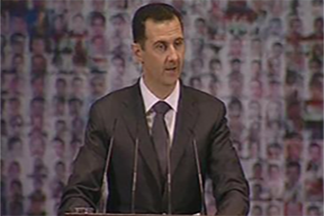
Discourse Analysis of Bashar al-Assad Speeches
NSI conducted discourse analysis of Bashar al-Assad speeches to evaluate his actions and intentions in the ongoing Syrian civil war. Our analysis identified potential types of actions and messages most likely to influence and deter Bashar al-Assad from using force in the ongoing Syrian civil war. Our approach was based on multidisciplinary analyses of Bashar al-Assad’s speeches, and how he reacts to real events and verbal messages from external sources. The speeches used in our analysis were delivered by al-Assad from Jan 2000 to Sept 2013; the past six years was sampled most densely. Additional Twitter feeds were analyzed to gauge his influence in the region. We utilized five separate analytical methods to analyze his speeches: (i) automated text analytics that profile al-Assad’s decision-making style and ability to appreciate alternative viewpoints; (ii) integrative cognitive complexity analysis that reveals al-Assad’s ability to appreciate others’ viewpoints and integrate them into a larger framework; (iii) thematic analysis of the cultural and political themes al-Assad expresses before taking action or in reaction to events; (iv) qualitative interpretations of major themes in al-Assad’s rhetoric; and (v) analysis of the spread of Twitter feeds.
We highlight our major findings that reinforce each other as particularly robust for policy: al-Assad is capable of recognizing other viewpoints and evaluates them in a nuanced and context-dependent manner; al-Assad values logical argumentation and empirical evidence; al-Assad’s integrative cognitive complexity is relatively high, but might be lower before he takes decisive action or when under intense threat; al-Assad’s reasoning is consistent with his Arab nationalist Ba’athist political ideology, and with a consistent opposition to Israel and Western domination; and al-Assad sees Arab resistance and his leadership, or at least that of the Ba’ath party, as essential. Our primary recommendations were: avoid direct threats to the Syrian Ba’athist regime’s hold on power; appeal to al-Assad’s relatively high baseline level of cognitive cognitive complexity (ability to see different sides to an issue, flexible decision-making, openness to information), pragmatism, and respect for Arab nationalism to broker a negotiated settlement; and identify and exploit al-Assad’s dynamic levels of integrative cognitive complexity to assess his relative susceptibility, develop arguments and recommended psychological actions and/or refine assessment criteria at a specific point in time.

Discourse Analysis of Kim Jong Un’s Speeches
North Korea’s relations with its neighbors were arguably at their lowest levels since the armistice of 1953. On February 12, 2013 North Korea conducted a nuclear test, and moved at least one missile to the coast, threatening to launch. NSI conducted a rapid assessment of nine key speeches delivered by Kim Jong Un between 2012-2013 in an effort to gauge his intentions by examining his rhetoric. We utilized two well-vetted discourse analysis methodologies for understanding cognitive complexity and culturally relevant themes. These methods have been successful in gauging the behavioral intentions of political leaderships. The analytical focus was not on his overt messages (these are usually obvious enough), but the more subtle cultural references and linguistic markers of which leadership is often not explicitly aware and that can provide clues to the leadership’s intentions and state of mind.
Our analysis produced two key findings. First, Kim Jong Un’s integrative cognitive complexity in this past year was uniformly extremely low and therefore cannot indicate any shift in perspective or behavior. Integrative cognitive complexity has largely been applied to the analysis of political rhetoric and is used to assess an individual’s ability to recognize multiple perspectives and to see and understand the relationships and causal connections between them. A wide body of literature demonstrates that the integrative cognitive complexity of key leaders decreases prior to engaging in conflict and rises as their states pursue more cooperative or peaceful policies. Our analysis used a well-vetted methodology that produced an ordinal 7-scale measure to explore patterns in the integrative cognitive complexity represented in the public speeches of Kim Jung Un and the degree to which these might indicate an intention to pursue conflict. Second, key findings of thematic analysis indicate increased likelihood of conflict, although some contra- indicators exist. Thematic analysis captures, reports, and analyzes patterns in conceptual themes expressed in discourse, and is commonly used in anthropology, linguistics, discourse analysis and many applied fields. Our previous research demonstrated that subtle cultural themes, rhetorical devices and linguistic structures were largely independent of speech topic; reinforcing the fact that speakers betray their sentiments and motives through their language. Many of the themes identified in the corpus were not necessarily culturally relevant in general Korean culture, but were more focused on the political concerns of the North Korean leadership. Political themes included communism, economic development, nuclear capability, war, military, patriotism, sovereignty, reunification, among others. The cultural themes that we identified included concepts that were likely to be salient in Korean society, such as pride, heroism, kinship, strength, prosperity and others. These themes resonate in a broad array of Asian societies, and were found to be salient in studies of south Asian societies. And lastly, the metaphysical themes dealt with religious and quasi-religious matters such as Juche philosophy, and notions of the eternal, immortal, etc. While North Korean society is explicitly communist, Juche philosophy has many elements of Eastern philosophy and religion, including Confucian elements.
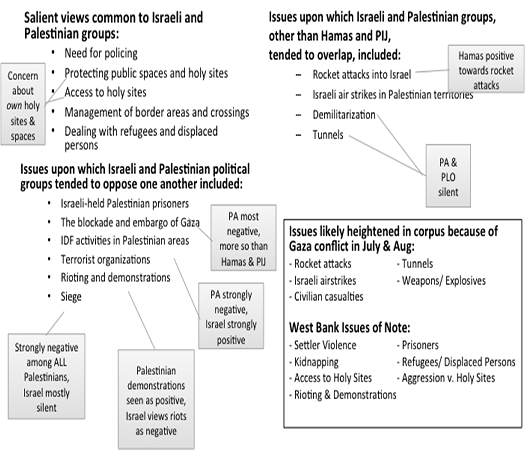
Israeli-Palestine Joint Security
What are the minimum thresholds for indigenous security forces in protecting its citizens and guarding its borders, particularly when the neighbor country demands an unspecified level of security?
NSI conducted a thematic discourse analyses on leadership speeches from across the Israeli and Palestinian political spheres. Our analysis sought to understand the political positions and security interests of Palestinians and Israelis in order to find potential areas of compromise and conflicting interests. We identified important areas of mutual concern that may serve as starting points for negotiation, but also areas of diametric opposition. Coordinated policing, access to and protection of holy sites and public places, handling of refugees and displaced persons, and management of border areas and crossings were some of the key concerns that were common across the parties. Blockade and embargo of Gaza, Israeli-held Palestinian prisoners, and IDF activities in Palestinian areas were not.
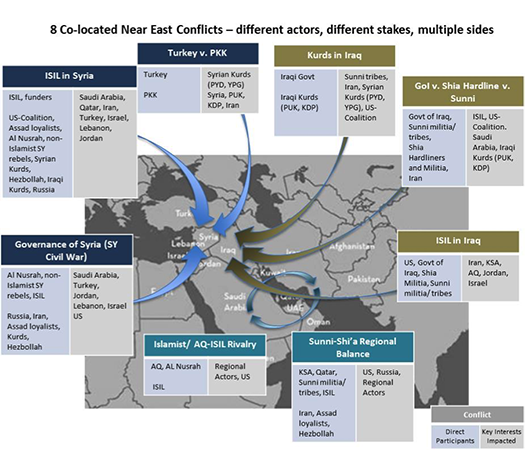
Unpacking the Iraqi/Syrian Regional Conflict
NSI participated in a short term proof-of-concept to evaluate neuro-cognitive maneuver engagement options in the narrative space. There were three objectives for this effort: to disrupt ISIL leadership’s ability to command and control forces; to neutralize their ability to maintain or increase moral, political, and financial support and recruit foreign fighters; and to psychologically isolate ISIL leadership from one another and their respective constituencies inside and outside of the organization. As part of this effort, NSI conducted a thematic discourse analysis of ISIL leadership speeches to discern divisions within Islam, violent Jihadism and the historical context of conflict between ethnic factions, and resistance against outside forces. These are important themes manipulated by ISIL to recruit support and justify their actions. Even if ISIL were thoroughly defeated and eliminated from the region entirely, these themes are part of the reality of the region and will remain. Therefore, any consideration of possible futures in the region must take into account these themes, how they are used in political discourse and how they are likely to influence the region’s stakeholders.

Identify What Customers are Saying and Why it Matters
NSI’s thematic analysis–a technique from our more broader discourse analysis methodology–was utilized to identify what your customers are saying and why it matters to them. We looked at not only what they are saying…but also how. Each thematic analysis is tailored to the problem at hand. By methodologically but openly approaching the discourse of interest, NSI taps into the meaningful issues as they are communicated by the speaker (e.g. the client’s target demographic, emails to customer service, comments to a client’s advertisement, etc).
In a project for a large entertainment company with an active fan base, NSI conducted a thematic analysis on short promotional videos and teasers alongside the fans’ comments to each video. The combination of exploring the patterns in the video content and the customers’ responses advanced insight into the keystone values and qualities that the client espoused and how those values were echoed and appreciated by their customers. NSI’s thematic analysis goes beyond just identifying the most frequent mentions and issues–the NSI approach uncovers what really matters and why.
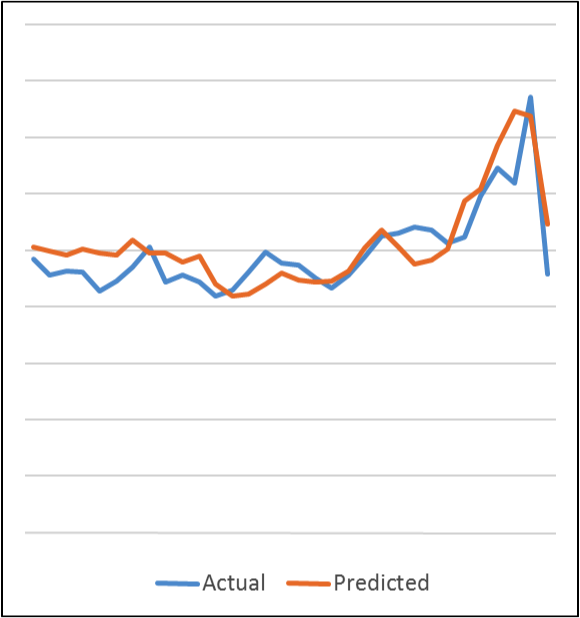
Forecasting Peak Online Usage
A global software and entertainment company had a need to better forecast peak online usage of their product, to avoid lost revenue due to insufficient capacity, or excess cost due to overestimating demand.
Using a combination of behavioral science research, advanced statistics, social media discourse analysis, and multivariate regression, a series of predictive models were developed that provided a new level of rigor and science for capacity planning and projections.
Through residual analysis and ongoing consulting with key client personnel, the model predicted usage on a daily basis to within an average of 5%. Sentiment data was also used to provide guidance on advertising productions, thematic elements, and key sentiments that drive (or detract from) customer revenue.
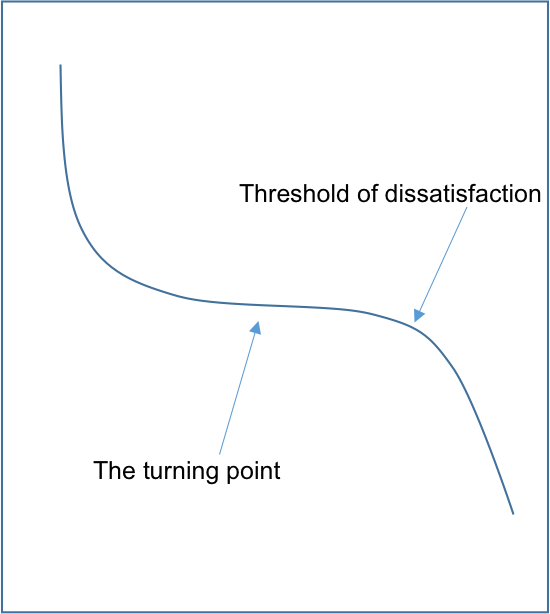
Optimizing Customer Service Wait Times
A customer service organization was not meeting its goals in satisfaction with wait times, even though actual wait times had been driven progressively lower.
Applying discourse analysis of customer sentiment data and non-linear regression analysis both showed that while actual wait time was important, the treatment customers received had a substantially larger impact on how they felt about the amount of time they actually waited than did the number of minutes they had to wait.
By deriving the relationship between all of these variables and overall wait time satisfaction, and using differential calculus, it was possible to predict satisfaction with wait times at different levels of actual service level, and different levels of quality of service.
The findings indicated that some service levels could be lengthened to allow for more time with each customer, while simultaneously increasing satisfaction and lowering cost.